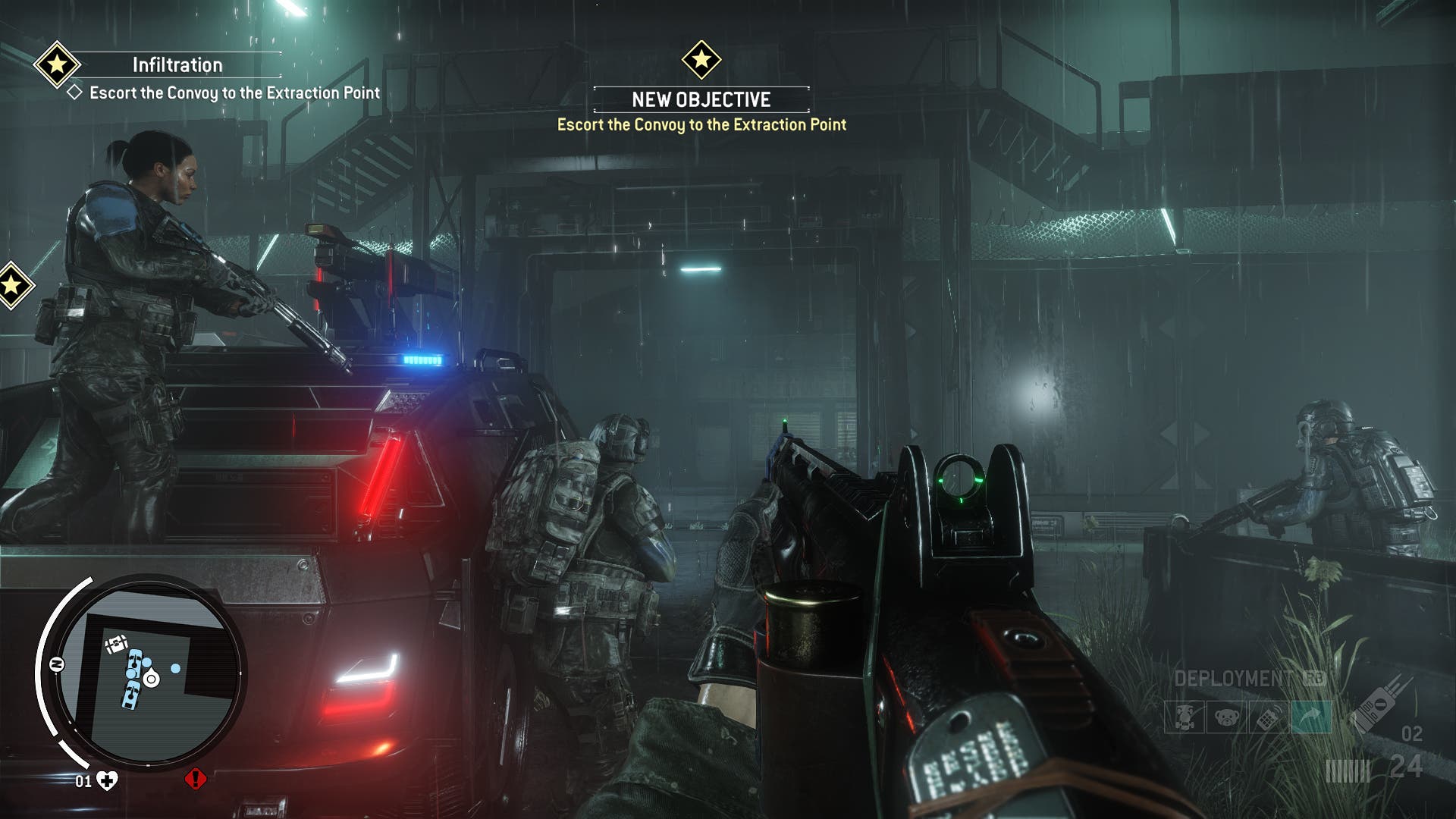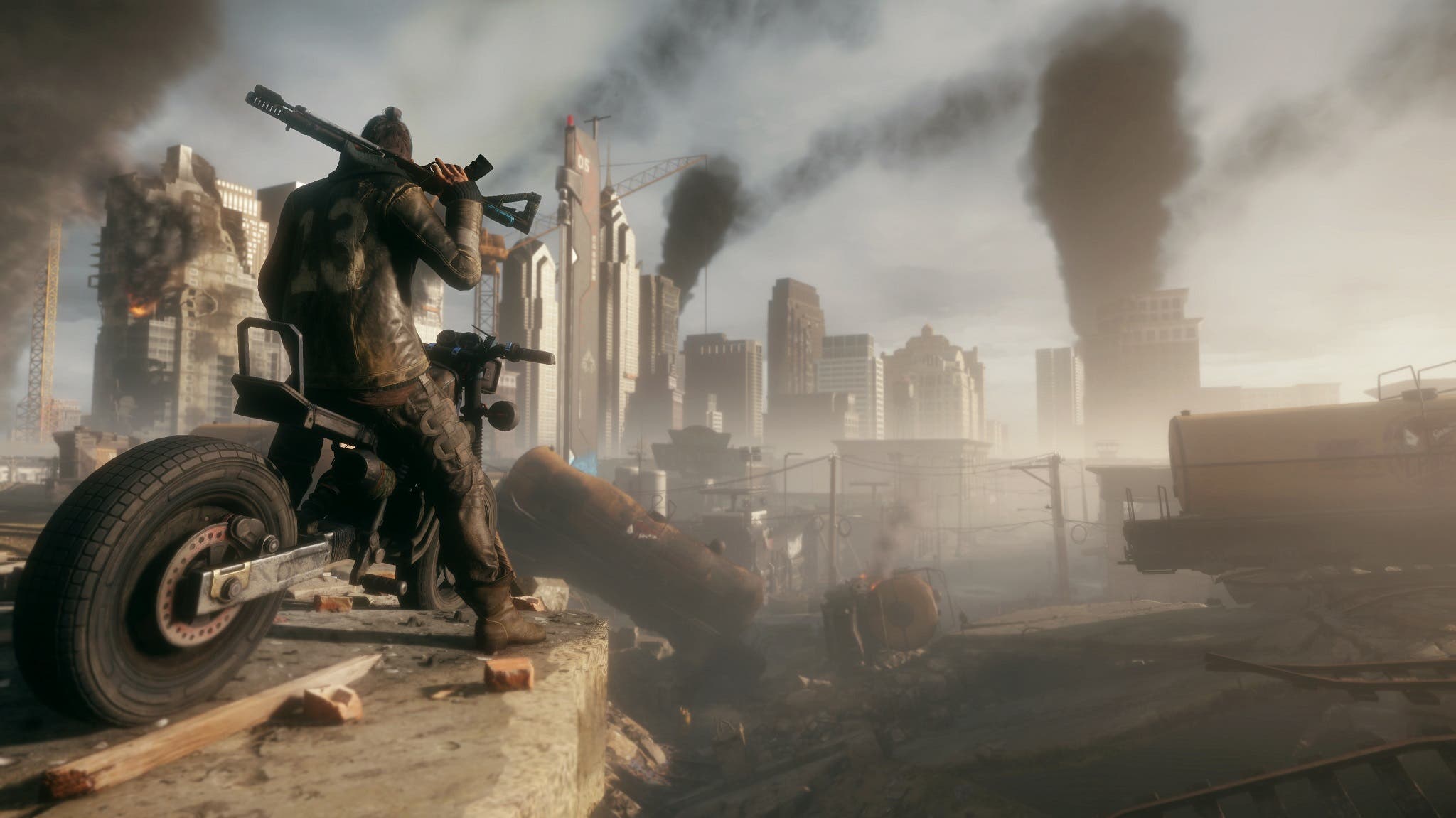The sequel to 2011’s Homefront is finally here after four years of development by the studio now known as Dambuster Studios. While Homefront: The Revolution is not directly connected to people and places of the original game, it resides in the fictional future in which The North Koreans are settled in with their occupation of America. This is something that’s far-fetched and unlikely to occur, but is nonetheless entertaining of an idea. Taking place in Philadelphia, you’re placed in the middle of a group getting ready to begin a revolution that takes you all over the city to liberate zones to gain the support of the denizens. What better place to regain independence than from the city that birthed it.

Homefront: The Revolution has a short setup to the goings on, introducing you to a Korean company APEX, and then you’re thrust into the game. It’s a simple “North Koreans are bad. Time to rise up. Let’s go.” Which I guess is okay, but it doesn’t do a good job to get me to care about the resistance or revolution that’s brewing. There’s some raw stuff going on in the intro cinematic, but with this game, there’s some thematic inconsistencies and tonal changes that disconnect the games. Sure, the oppression is the same and they are more embedded, but it’s a very different feeling game, for better and for worse. You play as a silent protagonist named Ethan Brady. He just finds himself involved as part of The Resistance, a group who have a strong desire to drive the North Koreans, or “Norks” out of Philadelphia. This is a location not seen in many games, so getting acquainted with its geography is as if it were a fictional place to me. There’s a lot of land to cover, and many open-world games give you different modes of transportation. Here, there are only motorcycles to ride. A lot of the world is built around its use, even some ramps with gaps that only a motorcycle can clear.
In terms of gameplay, this is a first-person shooter with an open-world setting akin to Far Cry or Red Faction: Guerrilla where the enemy is embedded deep into the city, and has been for decades at this point. So it is up to you to cause an uprising and take back the city, sectors at a time. As you play, the game will often remind you to win the “hearts and minds” of the people, which is sometimes a barrier to progress. You must get an entire zone to 100% to encourage them to rise up, this will be done through the game’s side activities and by dismantling propaganda items strewn about the city. Unlike most open-world games about territorial reclaiming with meager visible results, Homefront: The Revolution shows a stark visual transformation that is seen in each section of Philadelphia you free of the “Nork” control. People will be out in force, rioting, and beating the shit out of NPK at any chance they get, and setting cars aflame.
Homefront: The Revolution has a plentiful amount of side missions, known in the game as Strike Points. These are not activities deemed diversionary or something of a distraction, these side missions that give meaningful progress towards recapturing zones within Philadelphia. While repetitive, you’ll be tasked with eliminating the “Norks” from buildings, hacking drone towers, restoring power to generators, disabling coolant systems to overheat the stronghold, recover documents, or even just broadcast a message. Many of these tasks, across the game as a whole requires first-person platforming which isn’t the game’s strongest attribute, and falling needlessly is commonplace. Thankfully fall damage is negated for whatever reason, and allows you to not lose progress due to a jump that wasn’t timed properly. The main story missions of Homefront: The Revolution have a lot of side missions integrated as part as being able to progress the story. The unique beats of the game suffer from making progress, then something happens to someone or something, and plans are changed. They are entertaining, and really showcase how oppressive and intimidating the “Norks” can be.
All of the missions within the game allow to play any way you wish. So if you want to be stealthy, you can, and it even gives you a tactical advantage. If you want straight-up action and shooting, that’s viable so long as you’ve recruited support and flank the enemy. It should be noted that Homefront: The Revolution handles its open-world a bit different, in that there is a point of no return before the final mission. And there’s a finite ending to the game, and there’s no revisiting any location once the credits roll. The only way to go back and do more within the world is to revert to a prior autosave, as there aren’t any manual saves.

Homefront: The Revolution is not a difficult game, but the story missions can be challenging. If you happen to die in free roam, you’re incapacitated, lose any valuables you’ve picked up, and respawn in a nearby safehouse. If you die in a mission, you are declared K.I.A. (Killed In Action) and restart at the last checkpoint. While in a mission or free-roaming, you can recruit fellow freedom fighters who are out in the open to fight alongside you for some guerrilla warfare. The AI behind them is especially competent and are willing to attract bullets their way to prevent the focus from being all on you.
The way the game segregates its zones in terms of how much conflict resides in each, is really interesting and allows you to adjust how you play the game. You’ll spend a lot of time in red zones where are there are constant battles happening, where the KPA will shoot you as soon they see you. Yellow zones discourage the use of weapons, and so long as you’re not in view of a camera or KPA agent, you can move about freely without conflict. Green zones are rare, but are all KPA and are safe, free from any danger. Each of the areas you explore allow for either a great way to experience combat, or in the less hostile zones, allow for some downtime and avoidance.

Homefront: The Revolution‘s weapons and gunplay are something to be admired, introducing interesting elements beyond just having the ability to craft weapons, and upgrading them. You see, KPA weapons are fingerprint-locked, so you can’t pick up their weapons nor use their ammo, making this a gameplay consideration with what ammo you use a scarcity. With a stark similarity to Crysis, you can view your weapon and modify it on the spot. You’ll be able to change out barrels, under barrels, and sights. A more exciting transformation is conversion kits. Conversion kits can be purchased to allow you to transform a pistol into an SMG, an assault rifle into a mine launcher, or a crossbow into a flamethrower. These conversion kits double or triple the types of guns you have on you at any given point, while your limited to three weapons in your loadout (which can be modified at any point), conversion kits can get you out of a bind should you run out of ammo in any particular weapon.
All of Homefront: The Revolution‘s weapons can be modified and upgraded, and the guns are real-world weapons like the M4 rifle and Mossberg 500 shotgun. You’ll craft Molotov cocktails and IEDs. With KPA points earned through liberating sectors, you can purchase variants of existing weapons. Instead of just distractions which consist of fireworks, you can buy a teddy bear with fireworks inside of it. Instead of an IED, you can buy an RC car with an IED attached. The RC car stuff is almost required later in the game in order to access certain areas, but is a good tool to have to keep you from immediate danger.

While the first game featured a Call of Duty-esque multiplayer, Homefront: The Revolution goes for a co-op mode is simply called “Resistance Mode”. I couldn’t actually play any of the co-op prior to release, because none of the missions can be played solo, even in a private game. From the little I was able to gather on it, the creating of your character is extremely limited in visual appearance, and your character’s features cannot be changed once finalized. It seems like an interesting mode to experience Homefront: The Revolution with someone, but it appears to be lacking in personality up-front.
Homefront: The Revolution is also a bit buggy: I’ve fallen through the world, mantled through solid objects, got stuck between NPCs, unable to complete side objectives, and had even intermittent sound issues. Using the latest version of the CRYENGINE, Homefront: The Revolution can sometimes looks rough, often looking like a cross between last and current-gen. It’s far from ugly, but this is a game that’s been long in development and not one would consider a technical showpiece. The game also has an issue maintaining 60fps, while I was able to keep it between 45-60fps, it was unstable at best.

In the end, I enjoyed Homefront: The Revolution, as the characters and setting grew on me the more I played it. The side missions just made sense to take part in, which then made me more inclined to complete them. Homefront: The Revolution goes for a different direction than its predecessor, and doesn’t settle for just being perfunctory, it actually steps up to be a much better and bigger than the original. And hey, it does have a really cool easter egg to discover. While I realize that Homefront: The Revolution has many shortcomings, none of them break the game. It is enjoyable to play and offers a unique take on open-world, survival, and weapon modification that allows you to play the game how you want. Homefront: The Revolution is not about saving the country or world, it’s a smaller story of one city rising up to revolt against the crushed freedom that Philadelphia once embodied, and that’s more interesting to me.
A pre-release Steam code was provided by the publisher for review purposes


